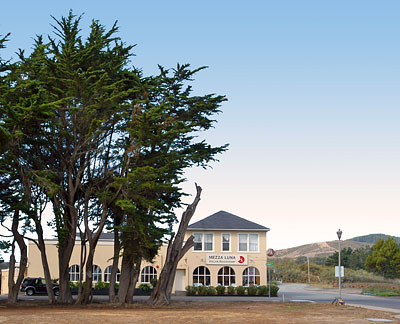National Register of Historic Places in San Mateo County
Princeton Hotel
Capistrano Road and Prospect Way
Princeton-by-the-Sea
Built 1908
Hotels, bath houses, dance halls, and the usual array of amusement resorts were the first structures to appear along the proposed route of the Ocean Shore Railroad in 1907 and 1908. Most of these structures have been demolished, destroyed by fire, abandoned and lost by neglect, or remodeled beyond recognition.
The Princeton Hotel holds the distinction of survival and continues to be easily recognizable as it originally appeared.
In 1905, the new railroad company proposed to connect San Francisco with Santa Cruz. Much of its initial construction was destroyed in 1906 because the first portion of its route was through an unstable geological area in San Mateo County where the San Andreas Fault comes inland. Nevertheless, the company continued work and eventually tracks were completed as far south as Tunitas Creek. By 1908, when passage was available on the railroad to Princeton, the service was so popular that the railroad's rolling stock was taxed to capacity.
Promoter Frank P. Brophy laid out the town dubbed Princeton-by-the-Sea. He had constructed the Princeton Hotel when the railroad service reached his proposed village in 1908. In addition to the hotel there were a few houses built in Princeton, and one still finds remnants of sidewalks laid for the streets named thematically Harvard, Cornell, Stanford and West Point.
With the astute qualities of a speculator Brophy sold the hotel in 1910. One later owner, a pillar of the county's politicos, bitterly reminised of his purchase of the hotel in 1916 for $2,500 and his sale of it twenty years later for $500.
In the 1920's Princeton was known as San Mateo County's rum runners' paradise. The Princeton Hotel was center stage for this colorful period. Court cases, newspaper stories and local reminiscences expose Federal Revenue officers' raids, the delivery of illicit booze shipments off coastal ships and the usage of the resort business as a cover for the liquor distribution.
During the same decade documents also reveal the hotel's closure under the provisions of the Redlight Abatement Act. Such activities stimulated foreclosures, changes of ownerships, partnerships and leasees. No matter how unsavory or illegal, such incidents were a commonly recurring way of life along the coastal region adjacent to San Francisco.
